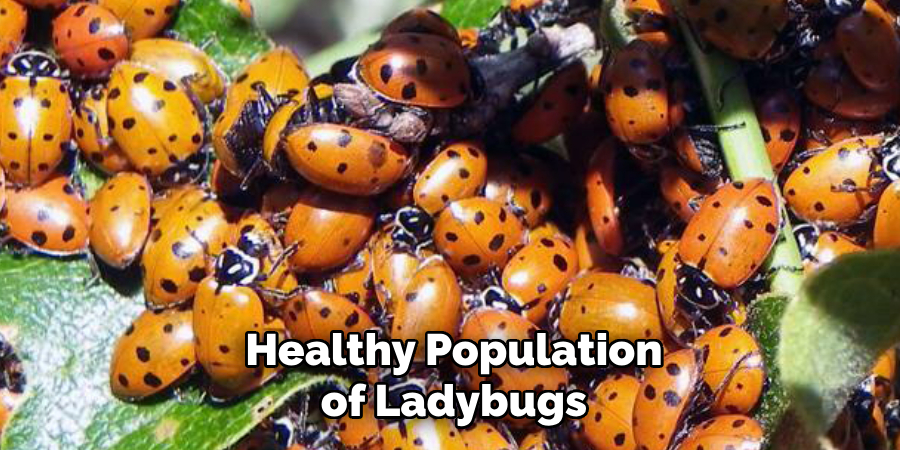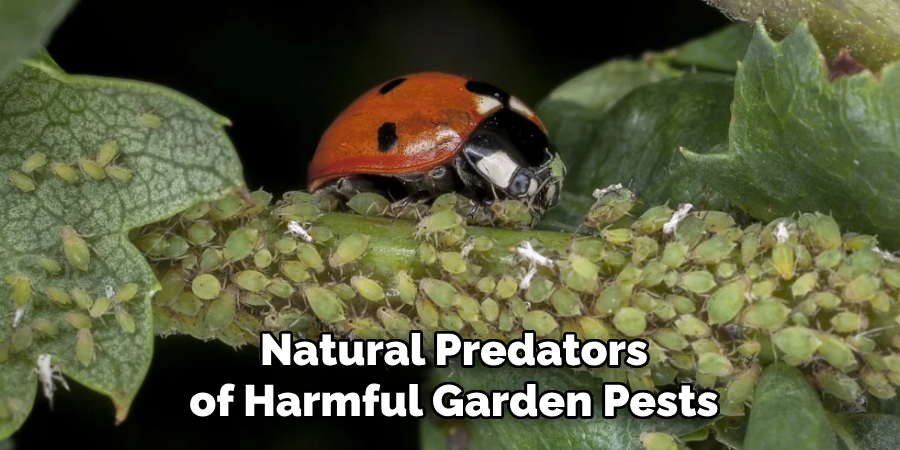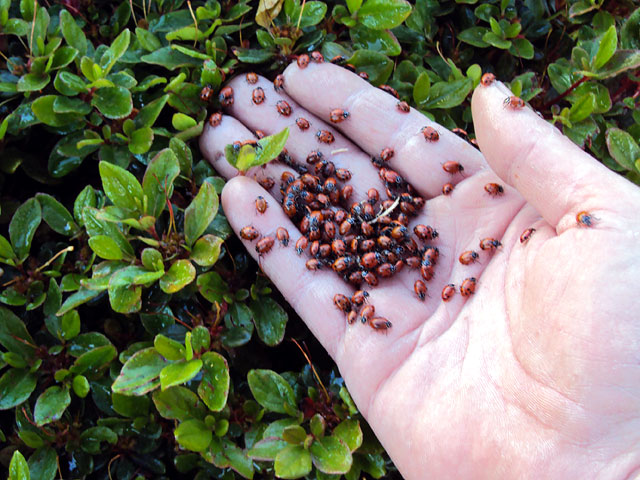To release ladybugs in the garden, gently remove them from their container and spread them throughout your plants. Use ladybugs as natural pest control to combat aphids and other harmful insects.
Welcome to the wonderful world of gardening! If you’re looking for an eco-friendly way to control pests in your garden, releasing ladybugs can be a great solution. These beautiful insects are natural predators of aphids and other harmful pests. By introducing them into your garden, you can help maintain a healthy balance of insect life without the need for harmful pesticides.
We will discuss how to properly release ladybugs in your garden to maximize their effectiveness as pest control. So let’s dive right in and learn the step-by-step process of releasing ladybugs to protect your plants!

Credit: getbusygardening.com
Benefits Of Releasing Ladybugs
Ladybugs are highly beneficial for your garden as they act as natural pest control agents. With their voracious appetite for aphids, mealybugs, mites, and other destructive insects, ladybugs help maintain a balanced ecosystem. Releasing ladybugs in your garden can reduce the need for chemical pesticides, promoting a more environmentally friendly approach to pest management.
These little predators are especially effective against aphids, which can rapidly reproduce and damage your plants. Ladybugs also play a role in pollination, aiding in the reproduction of flowers and crops. They are safe for humans, plants, and other beneficial insects, making them an ideal choice for organic gardeners.
To release ladybugs in your garden, it is important to create a favorable environment with access to food and water. Additionally, gardeners should consider the optimal time of day and weather conditions for releasing these helpful insects. So, if you’re looking for a natural and effective way to control garden pests, releasing ladybugs is a smart choice.
How to Release Ladybugs in the Garden: Step by Step Guide
Choosing The Right Time And Place
Releasing ladybugs in the garden requires careful planning and consideration. Selecting the ideal time for release is crucial to ensure their survival and effectiveness as natural pest control. Ladybugs are most active during the early morning or late evening when temperatures are cooler.
It is advisable to release them when there is no direct sunlight and wind, as it may stress the ladybugs. Creating an optimal habitat is equally important. Ladybugs are attracted to areas with ample food supply, so consider planting a variety of pollen-rich flowers and installing insectary plants.
Provide shelter by leaving some untrimmed vegetation or provide ladybug houses for them to rest. By following these guidelines, you can successfully release ladybugs in the garden and encourage a healthy ecosystem.
Preparing Ladybugs For Release
Ladybugs are beneficial insects that can help control pests in your garden. Before releasing ladybugs, it’s important to purchase them from reputable sources. Look for suppliers that offer healthy and active ladybugs. Once you have your ladybugs, it’s crucial to store and care for them properly.
Ideally, keep them in a cool place, like a refrigerator, until you are ready to release them. Make sure to provide a source of moisture for the ladybugs, such as a damp paper towel or a spritz of water. When you’re ready to release, do it in the early morning or late afternoon, when temperatures are cooler and the ladybugs will be less active.
Gently sprinkle the ladybugs onto the infested plants, focusing on areas with pests. Supporting your garden ecosystem with ladybugs can be a natural and effective way to control pests without harmful chemicals.
Releasing Ladybugs In The Garden
Releasing ladybugs in the garden requires careful consideration for successful distribution. Start by identifying problematic areas where pests are commonly found. Assess the spacing and distribution of ladybugs to ensure an effective release. Apply them to plants strategically to maximize their impact in controlling pests.
Ladybugs should be evenly distributed to target specific problem areas throughout the garden. Take note that the key to a successful release is to apply the ladybugs effectively to plants. This will help in promoting a natural and organic pest control method, minimizing the use of harmful chemicals.
By following these guidelines, you can enhance the presence of beneficial insects in your garden and maintain a healthy and balanced ecosystem.
Post-Release Care And Maintenance
After releasing ladybugs in the garden, it is crucial to provide post-release care and maintenance. Monitoring ladybug activity and behavior helps ensure their effectiveness in controlling pests. Ladybugs require adequate food and water sources to thrive, so it is important to provide them with suitable options.

Additionally, supporting ladybug population growth is essential for a sustainable ecosystem. By creating an environment that is favorable for ladybugs, such as providing shelter and minimizing pesticide use, their numbers can increase naturally. Proper care and attention will result in a healthy population of ladybugs, leading to effective pest control in the garden.
Troubleshooting And Common Mistakes
Releasing ladybugs in the garden can be beneficial, but it’s important to troubleshoot and avoid common mistakes. One such mistake is failing to identify signs of infestation or disease. Keep an eye out for damaged plants or drooping leaves, as these can indicate a problem.
Additionally, handling ladybug predation and competition is crucial. Ladybugs often eat other beneficial insects, so it’s important to strike a balance. Avoiding harmful pesticides and chemicals is another key consideration. Ladybugs are sensitive to these substances and may be harmed or discouraged from staying in your garden.
By following these guidelines, you can ensure a successful release of ladybugs and maximize their impact on your garden’s ecosystem.
Frequently Asked Questions For How To Release Ladybugs In The Garden
How Do You Introduce Ladybugs To Your Garden?
Introduce ladybugs to your garden by releasing them at dusk or dawn when they are most active. Sprinkle water on the area first to make it inviting for them. Gently release the ladybugs from their container in small clusters near infested plants, as they will naturally disperse throughout the garden.
What Are The Benefits Of Releasing Ladybugs In The Garden?
Releasing ladybugs in the garden is beneficial because they are natural predators of harmful garden pests. Ladybugs eat aphids, mites, whiteflies, and other destructive insects, helping to control their populations without the need for harmful pesticides. They also aid in pollination, promoting overall garden health.

When Is The Best Time To Release Ladybugs In The Garden?
The best time to release ladybugs in the garden is during the early morning or late evening when temperatures are cooler. Ladybugs are more active during these times and are less likely to fly away immediately. Avoid releasing them during hot, midday temperatures as they may become stressed and less effective in pest control.
How Many Ladybugs Should You Release In Your Garden?
For small gardens, release around 1,500 ladybugs per 1,000 square feet. If you have a larger garden or serious pest problems, increase the number accordingly. It’s important not to release too many ladybugs at once as they might struggle to find enough food if there are not enough pests in the area.
How Can You Create A Suitable Habitat For Ladybugs In The Garden?
To create a suitable habitat for ladybugs in the garden, plant small-flowered plants like dill, fennel, yarrow, and marigold. These plants provide nectar and pollen for adult ladybugs. Additionally, avoid using harmful pesticides and provide some shelter such as a simple bug house or piles of leaves for ladybugs to hide in when not hunting for pests.
Can You Buy Ladybugs For Your Garden?
Yes, you can buy ladybugs for your garden. Many garden centers, nurseries, and online retailers sell ladybugs. Ensure that the ladybugs are native to your region to prevent introducing invasive species. It’s important to note that purchased ladybugs may disperse from your garden, so creating a desirable habitat with plentiful pests and nectar sources is key to keeping them around.
Conclusion
Ladybugs are a beneficial addition to any garden, as they help control pests and promote a healthy ecosystem. By following these simple steps to release ladybugs in your garden, you can ensure their successful integration. Keep in mind the proper time and weather for release, gently watering the area beforehand to encourage ladybug activity.
Release the ladybugs in the early evening, when they are less likely to fly away immediately. Clear away any potential barriers or hazards, allowing the ladybugs to roam freely. Consider providing food and water sources to help them settle in.
Remember to be patient and give the ladybugs time to do their work. Watch as they help keep your garden free from harmful pests and enjoy the benefits of a thriving and balanced ecosystem. Happy ladybug releasing!

